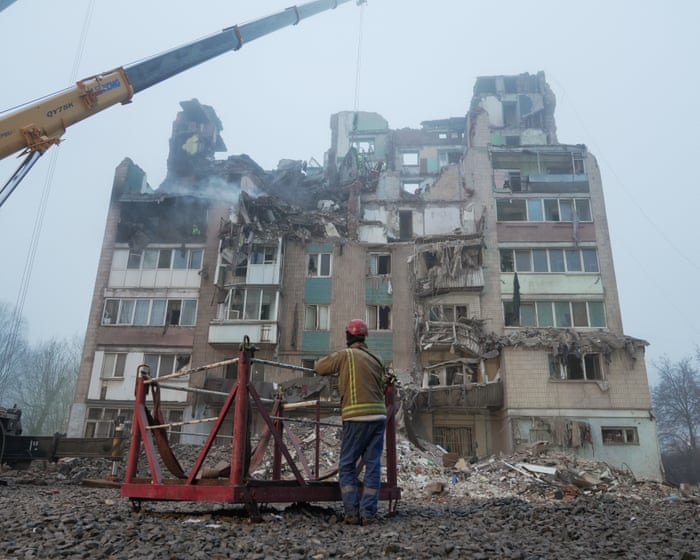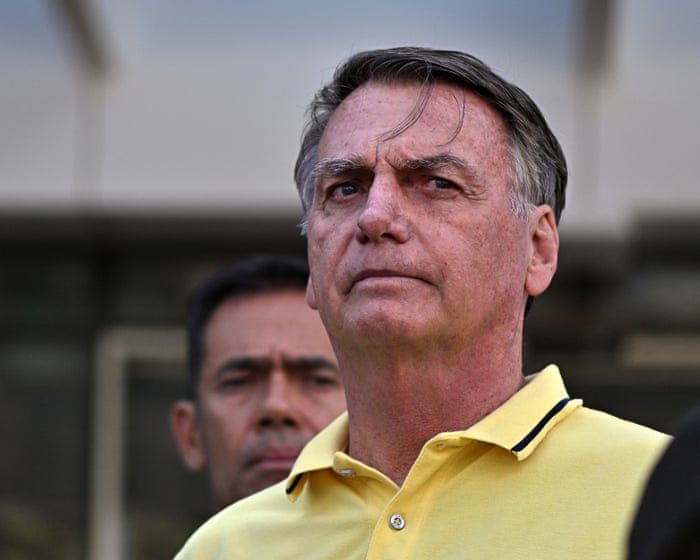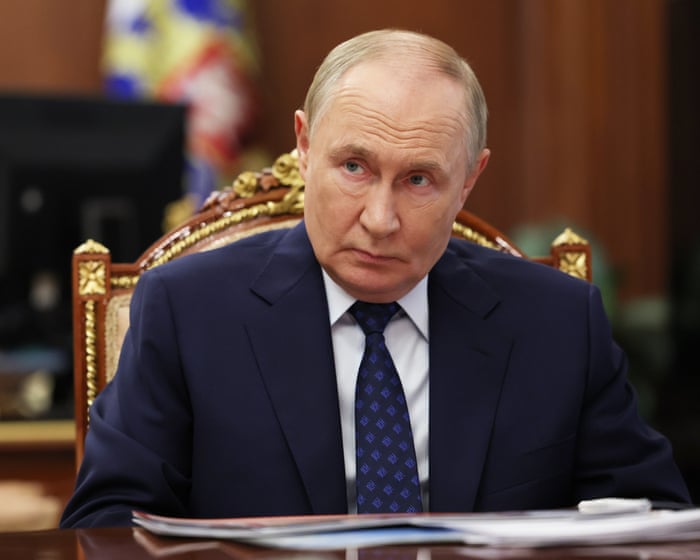For a moment, it appeared Donald Trump had changed his stance on Ukraine. In August, he warned of “severe consequences” if Vladimir Putin continued to block ceasefire talks, yet took no action when Putin did exactly that. Then, on October 22, Trump imposed major sanctions on Russia’s top two oil firms, Rosneft and Lukoil, significantly hindering Putin’s ability to fund his invasion. However, with his new 28-point peace plan for Ukraine—drafted by U.S. and Russian officials without input from Ukraine or Europe—Trump has returned to his usual pro-Putin position.
Trump’s proposal would reward Putin for attacking Ukraine while putting Ukrainian democracy at risk. The plan’s bold claim that “Ukraine’s sovereignty will be confirmed” sounds empty when so many of its terms undermine that very sovereignty. While a dream for the Kremlin, it would be a nightmare for Ukraine.
Reflecting his real estate background, Trump treats the conflict as a simple land dispute, as if giving Putin a piece of Ukraine will satisfy the autocrat. But Putin’s war isn’t just about controlling a devastated, deindustrialized region in eastern Ukraine. It’s about Ukraine’s democracy—and Putin’s determination to crush it so it no longer offers Russians an appealing example of accountable government, something his tightening dictatorship denies them.
Trump’s plan would freeze the divided provinces of Kherson and Zaporizhzhia and force Ukraine to give up all of Donetsk province. This not only rewards Russia with land its forces haven’t been able to capture in over a decade of fighting but also dangerously weakens Ukraine’s defenses.
Donetsk is home to Ukraine’s famed “fortress belt,” a network of fortified positions that has been crucial in blocking Russian advances. Trump’s plan would have Ukraine abandon these defenses, clearing a path for Putin to march on Kyiv if he decides to restart the war later.
To make it easier for Russia to fight again, Trump would require Ukraine to reduce its military from the current 800,000–850,000 troops to no more than 600,000. No such limits are placed on Russian forces.
In a nod to Putin’s false claims that Ukraine’s elected government is run by Nazis, Trump’s plan states: “All Nazi ideology and activities must be rejected and prohibited.” It also demands that “Ukraine will hold elections within 100 days” of a ceasefire but doesn’t require Putin to risk his dictatorship by holding elections in Russia.
The plan does make Russia promise not to “invade neighboring countries” and to “enshrine in law its policy of non-aggression towards Europe and Ukraine.” But given Putin’s history of breaking similar agreements—like the 1994 Budapest Memorandum, where Russia pledged to respect Ukraine’s borders in exchange for Ukraine giving up its Soviet-era nuclear weapons, and the 2014–2015 Minsk agreements, which promised a ceasefire and return of occupied eastern territories—why trust him now?
This is why Ukraine has pushed so hard for Western security guarantees. The plan threatens a “decisive coordinated military response” if Russia invades again and says Ukraine will get “reliable security guarantees,” but the details are vague or concerning. It not only bars Ukraine from joining NATO but also prevents NATO members from stationing troops in Ukraine, ruling out the reassurance force—expected to be led by Britain and France—that Ukraine was counting on to deter Putin from rebuilding his forces and attacking again.
A separate side deal is said to offer Ukraine…A NATO-style security guarantee would treat any future “significant, deliberate, and sustained armed attack” by Russia on Ukraine as a threat to the peace and security of the transatlantic community, implying a military response. However, unlike a strong Ukrainian military—Ukraine’s most reliable defense against further Russian aggression—the effectiveness of such an agreement would depend on the willingness of NATO leaders, including Trump, to take military action against Putin’s aggression. So far, they have refrained from doing so due to fears of a nuclear conflict.
To make deterrence more credible, European leaders have long insisted on U.S. support for any peacekeeping force in Ukraine, but that currently relies on the unpredictable Trump. Moreover, despite the NATO-like wording, Trump is reportedly offering only “intelligence and logistical assistance” or “other steps judged appropriate,” not direct military aid. This is unlikely to intimidate Putin.
As if embracing Putin’s demands weren’t enough, Trump’s plans also involve lifting sanctions against Russia and reinstating it in the Group of 8, from which it was expelled after forcibly seizing Ukraine’s Crimea. Removing sanctions would help Putin rebuild his military for a potential future invasion.
A particularly dangerous aspect of the plan is the proposed amnesty for Russian forces responsible for atrocities in Ukraine. Beyond the blatant illegality of Putin’s invasion—a clear act of aggression—Russian forces have systematically targeted Ukrainian civilians and infrastructure, committing obvious war crimes. The International Criminal Court (ICC) has already charged four Russian military commanders for attacking Ukraine’s electrical infrastructure, and Putin himself, along with his children’s rights commissioner, has been charged with kidnapping Ukrainian children. If Trump gets his way, he would sweep these and future charges under the rug.
Fortunately, Trump cannot control the ICC. The only way to strip the court of jurisdiction would be through repeated annual resolutions at the UN Security Council. Even if the U.S. and Russia (along with its ally China) supported such amnesties, Britain and France, as other veto-wielding permanent members, would have to agree year after year.
Offering such an amnesty effectively invites more atrocities. Trump’s proposal signals to Putin that he can continue committing crimes during ceasefire negotiations, confident that Trump will eventually absolve him. The day after Trump’s plan became public, another Russian glide bomb struck an apartment in southern Ukraine, killing five and injuring ten, including a teenage girl.
Ukrainian President Volodymyr Zelenskyy has understandably treated the plan as a “vision” rather than a final offer. Cautious about offending Trump, who must approve continued U.S. arms sales to Ukraine, Zelenskyy said he would negotiate based on the plan. But for a lasting peace in Ukraine, Trump’s proposal needs not minor fixes but major overhaul. Let’s hope Trump hasn’t fallen so deeply under Putin’s influence that he fails to see the serious flaws in his plan.
Kenneth Roth, former executive director of Human Rights Watch (1993-2022), is a visiting professor at Princeton’s School of Public and International Affairs. His book, Righting Wrongs: Three Decades on the Front Lines Battling Abusive Governments, is published by Knopf and Allen Lane.
Frequently Asked Questions
Of course Here is a list of FAQs about Kenneth Roths analysis of Trumps peace proposal for Ukraine with clear and direct answers
BeginnerLevel Questions
1 Who is Kenneth Roth
Kenneth Roth is the former executive director of Human Rights Watch a leading international nongovernmental organization that investigates and reports on human rights abuses worldwide He is a respected voice on international law and conflict
2 What is Trumps proposed peace plan for Ukraine
While no formal detailed plan has been published Donald Trump has repeatedly stated that if reelected he could end the war in 24 hours He has suggested that this would involve pressuring Ukraine to cede territoryspecifically Crimea and the Donbas regionto Russia in exchange for a ceasefire
3 Why would this proposal serve Putins interests
According to analysts like Kenneth Roth it serves Putins interests because it would reward Russias military aggression Allowing Russia to keep the Ukrainian land it seized would validate its invasion undermine international law and give Putin a major victory without having achieved his initial maximalist goals on the battlefield
4 What does ceding territory mean
Ceding territory means formally giving up land In this context it would mean Ukraine agreeing to let Russia permanently control parts of its country that Russia invaded and illegally annexed like Crimea in 2014 and more territory since 2022
5 What is the main goal of Putins invasion
Putins stated goals have shifted but a core objective has always been to exert control over Ukraine prevent it from aligning with the West and expand Russias sphere of influence Forcing Ukraine to cede territory achieves a significant part of this goal
Advanced Analytical Questions
6 How does this relate to the principle of appeasement
This is a classic example of potential appeasement Appeasement is a policy of making concessions to an aggressive power to avoid conflict History shows that this often emboldens the aggressor leading to further demands and larger conflicts later Roth argues that rewarding Putins aggression would encourage him or other autocrats to do the same elsewhere
7 What are the longterm consequences for global security if this plan were enacted
The longterm consequences could be severe It would signal that borders can be changed by force and that nuclear




